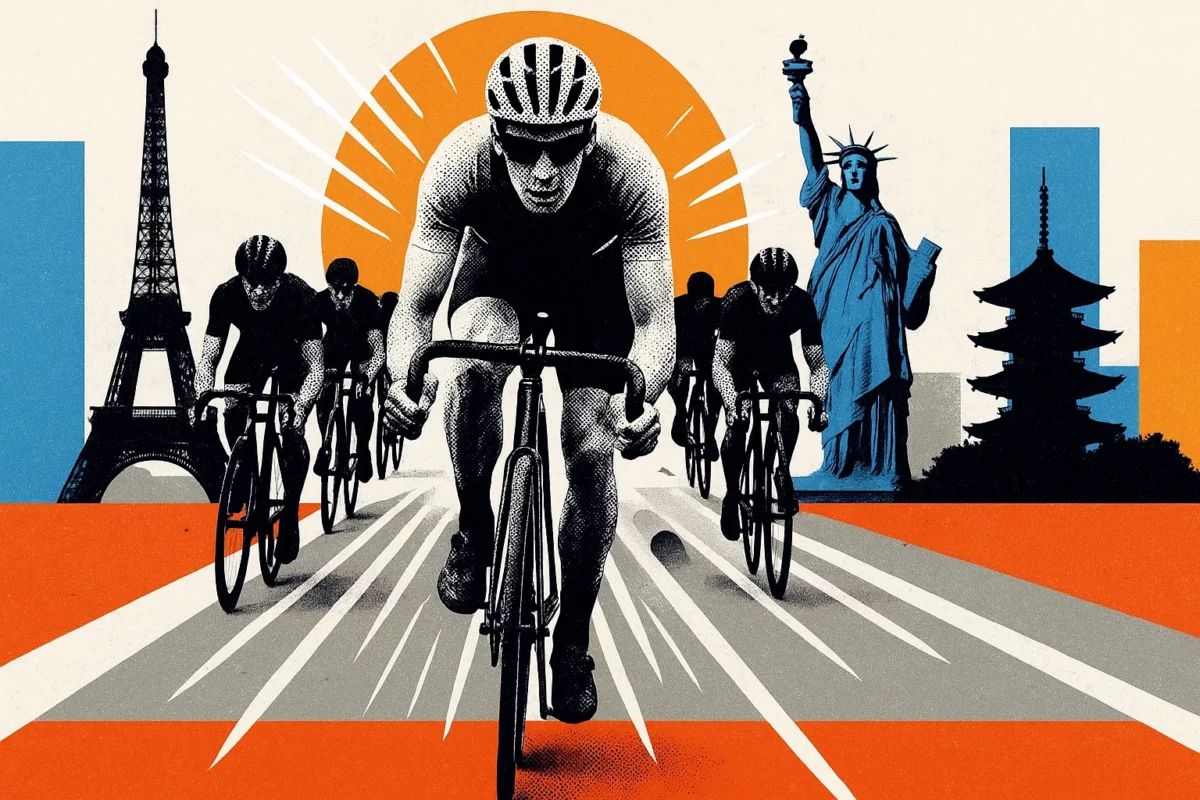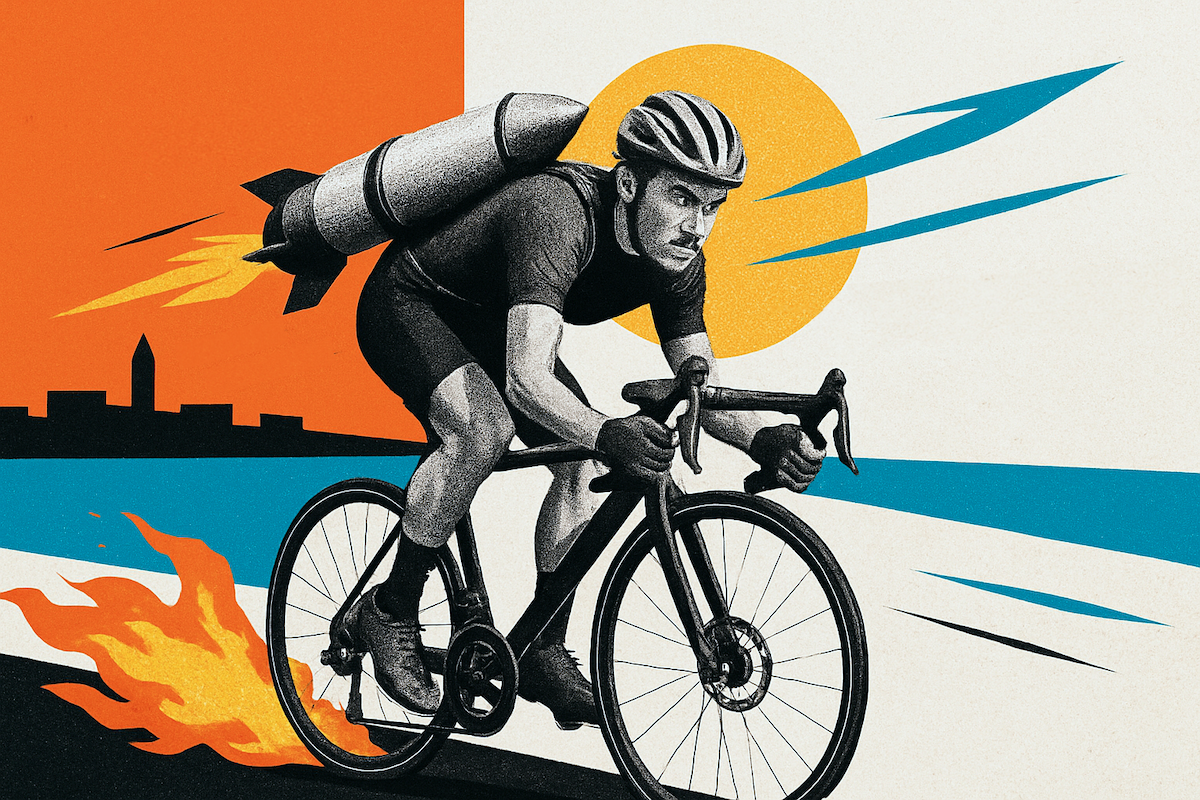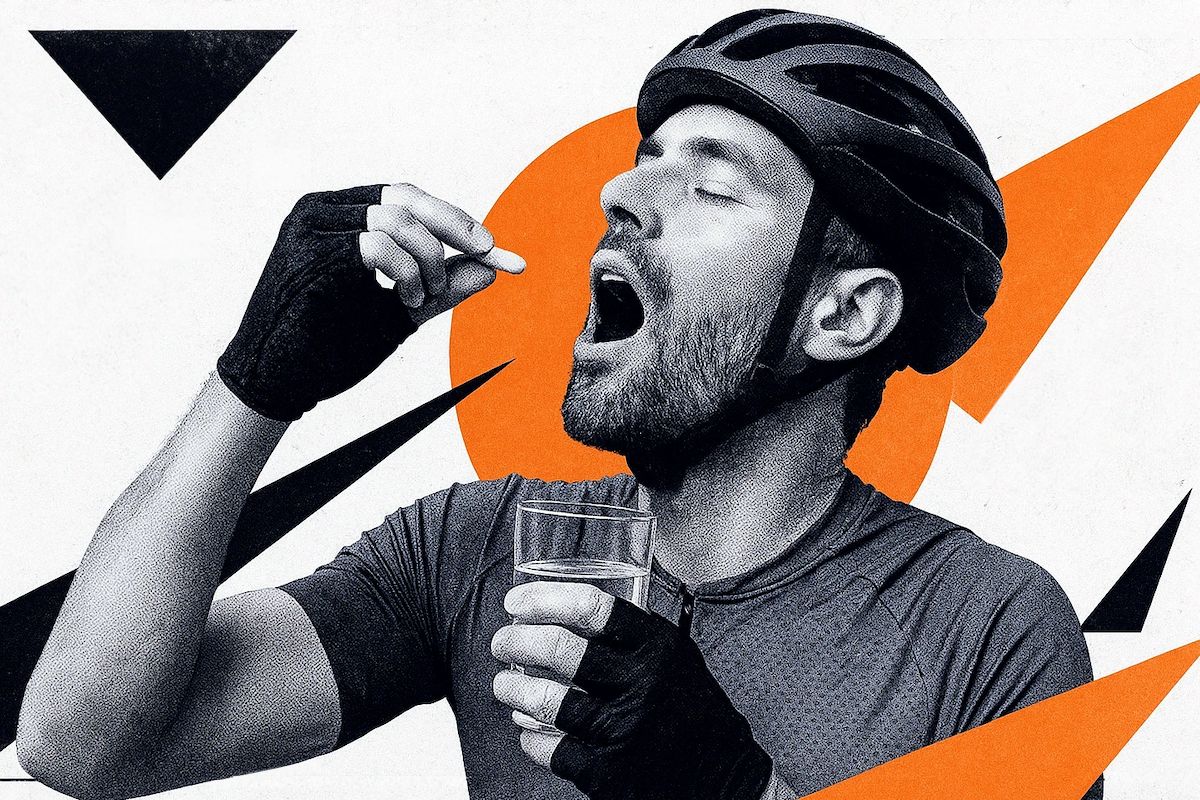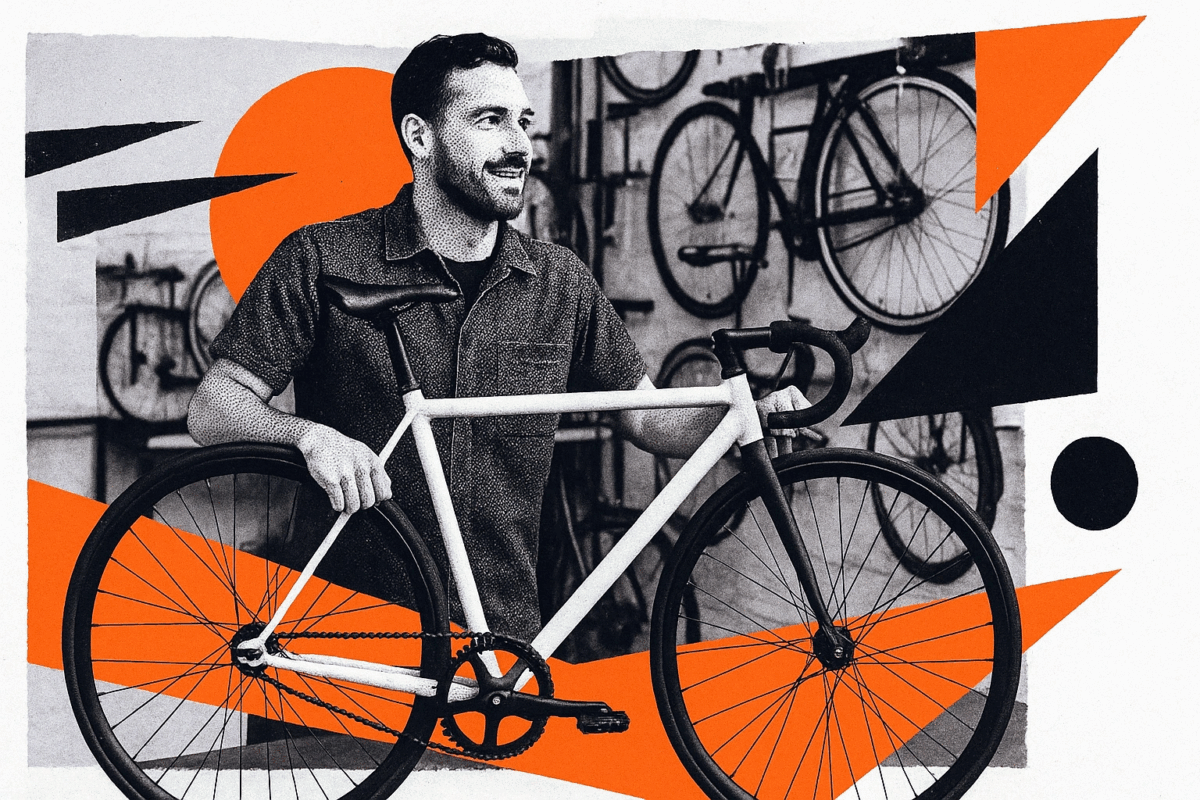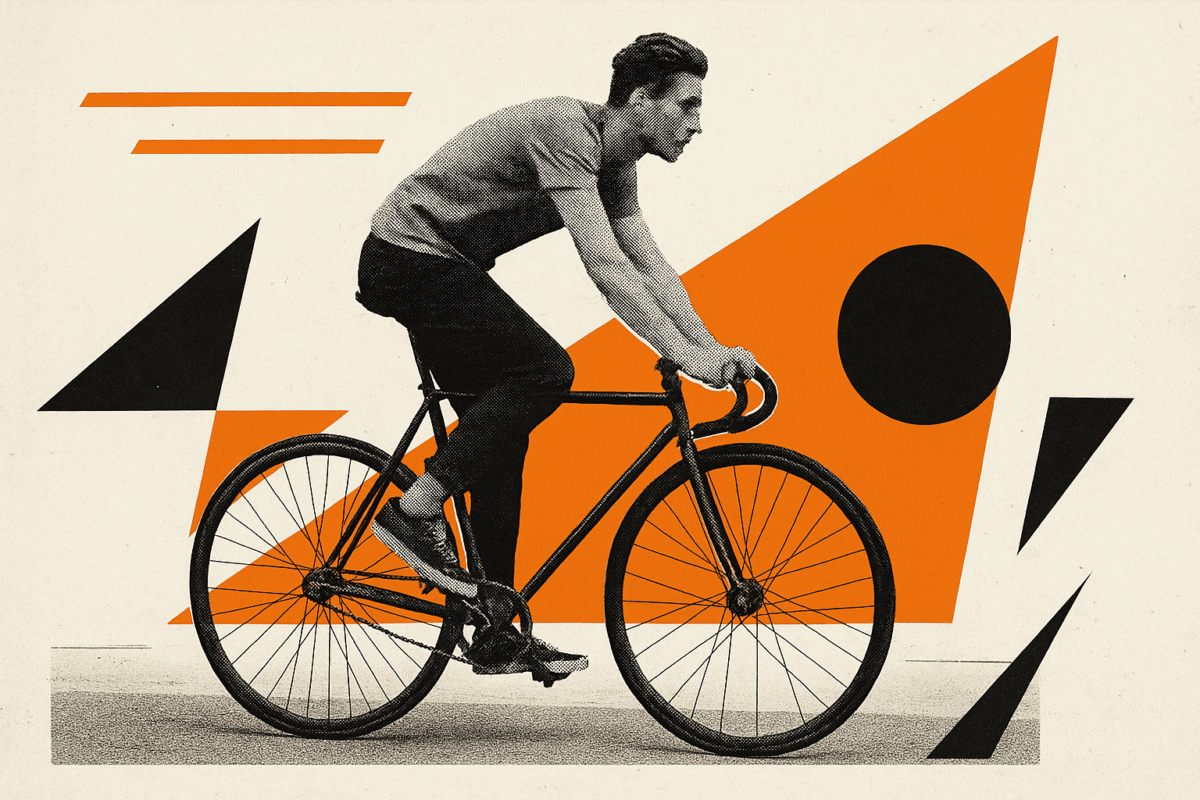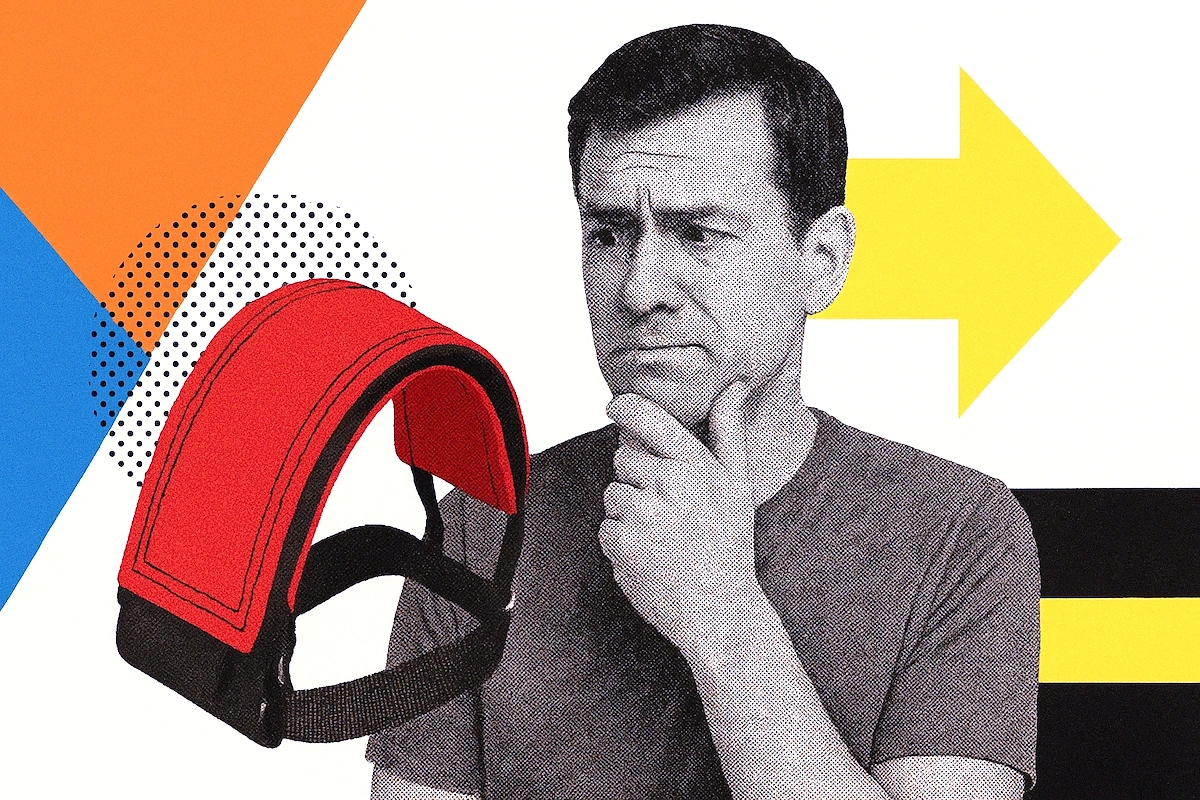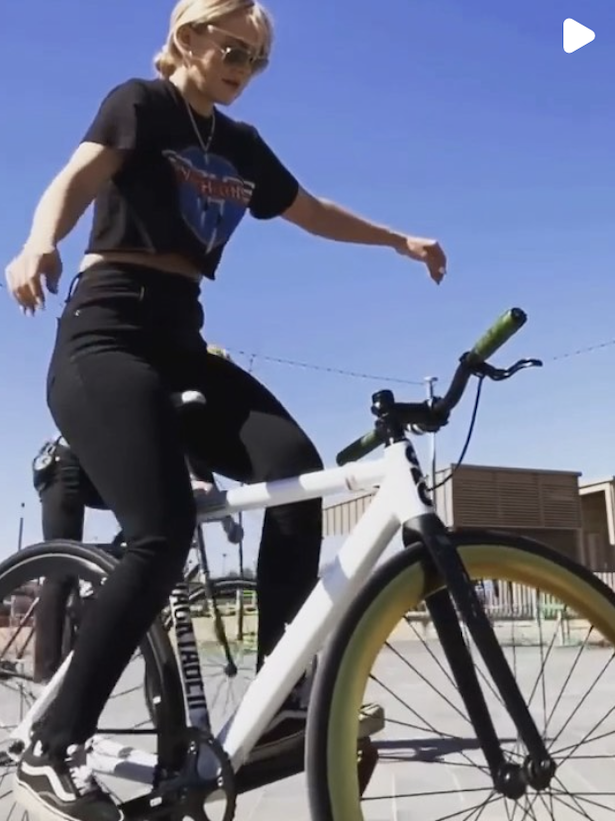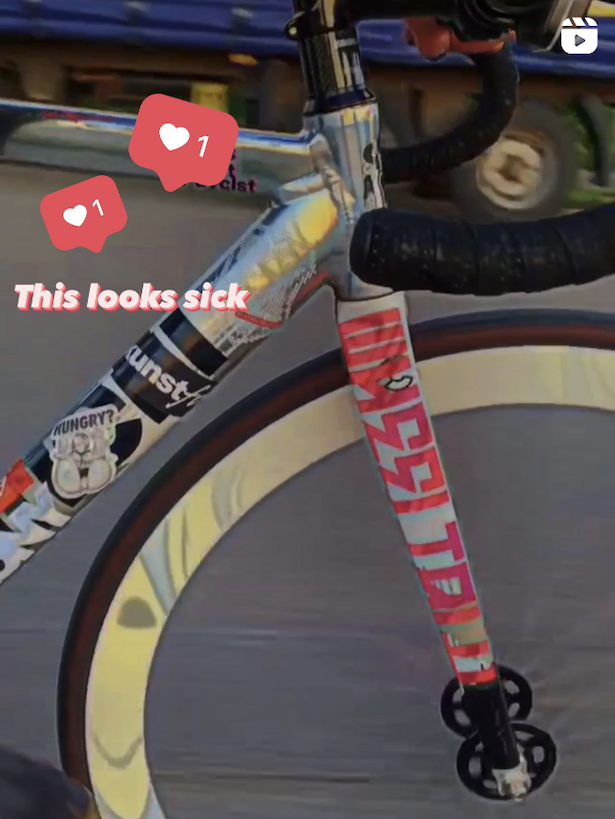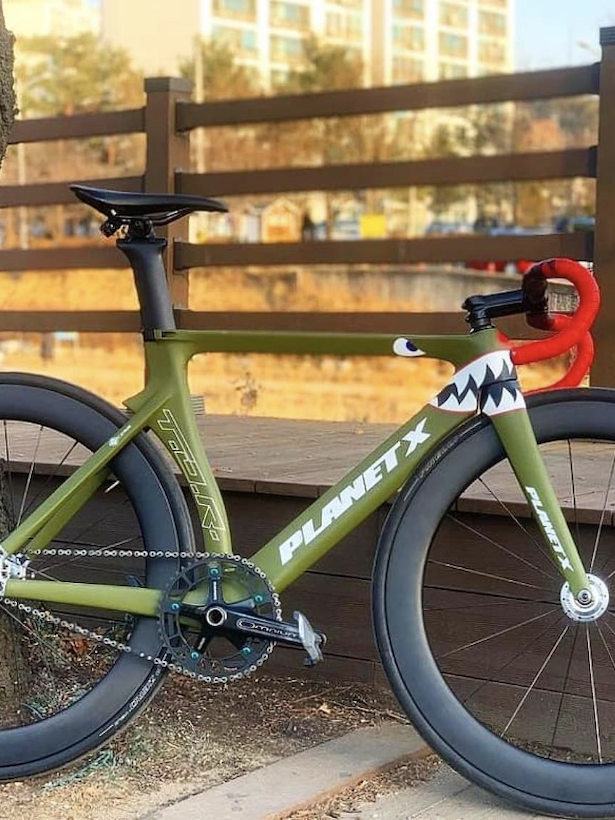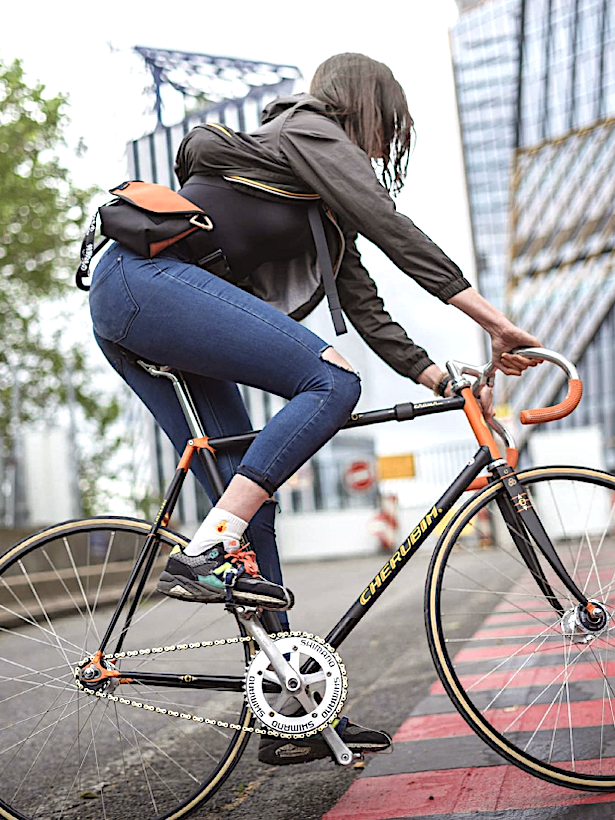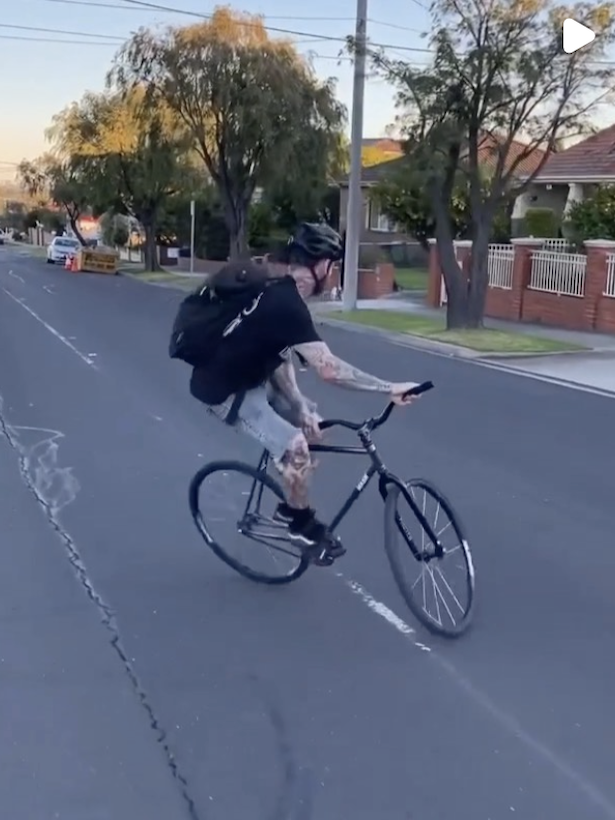
TL;DR:
- What it is: BMX tricks on fixed gear bikes (no coasting, always pedaling)
- Who it’s for: Fixie folkes who find cycling too easy and want to make it harder
- Core tricks: Skids, wheelies, bar spins, 180s, track stands
- Setup needs: Specific geometry, lower gearing, clearance for tricks
You see some guy doing wheelies and bar spins on a brakeless bike through city traffic and think: that looks like a death wish. 😵💫 You’re not wrong—but there’s method to the madness.
Fixed-gear freestyle—or FGFS—is exactly what it sounds like: doing BMX-style tricks on track bikes. 🚴♂️ It’s not track racing. It’s not bike-messenger commuting. (It’s certainly not practical). It’s two perfectly functional cycling styles mashed into something beautifully stupid.
A video titled “HOW TO BUILD A FIXED GEAR FREESTYLE BIKE” from the FOAD Gang YouTube channel.
What Fixed-Gear Freestyle Actually Is
The whole thing started mid-2000s when bike messengers got bored. They’d been riding fixed gear for work—simple, reliable, low maintenance. Then BMX and skateboard culture started bleeding into the messenger scene.
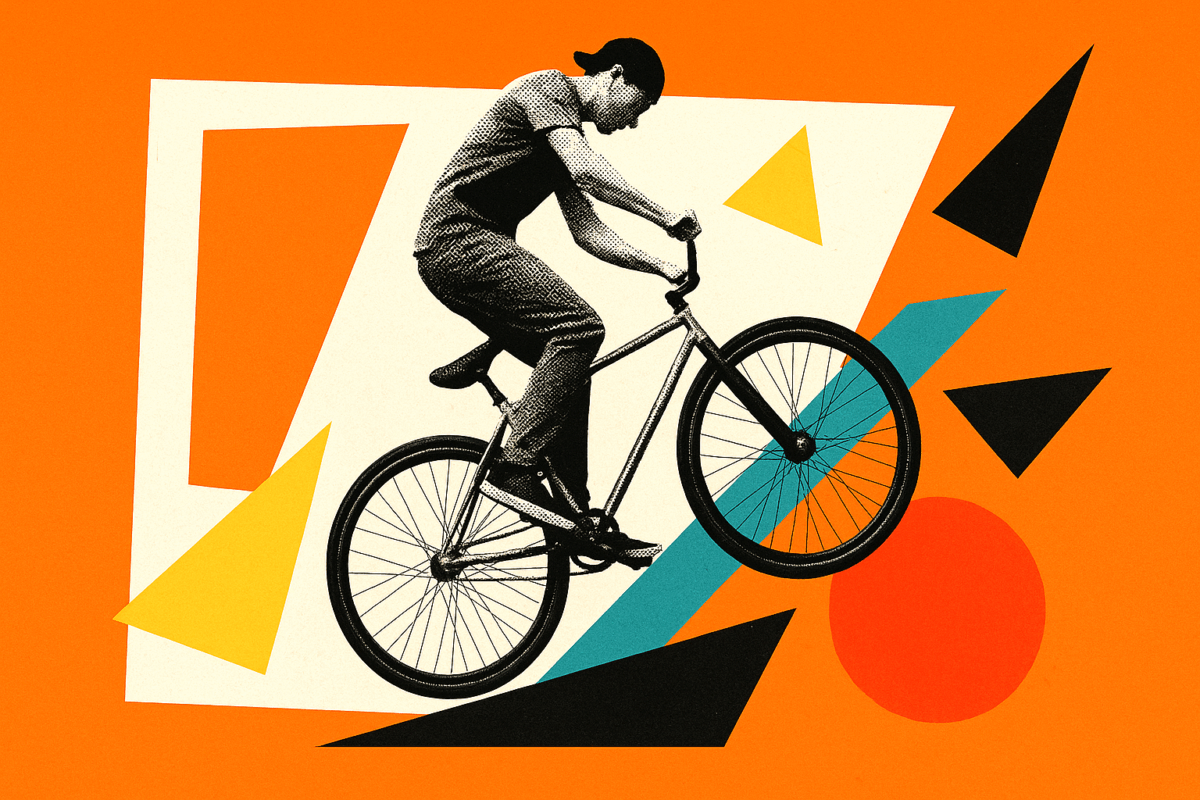
Someone looked at their track bike and thought: “Can I do a wheelie on this?” (Turns out you could). And then someone else thought: “What about a bar spin?” And the race was on.
The MASH SF video dropped in 2007 and everything changed. It wasn’t the first fixed gear video, but it was the one that made freestyle look legitimate. Keo Curry—considered the father of the scene—did tricks that shouldn’t have been possible on a track bike.
The “Keo Spin” (a specific bar spin variation) got named after him. When people saw that video, the fixed freestyle scene exploded.
Early crews like Council of Doom (2008) and Macaframa pushed things further. By 2008, you had riders all over SF, LA, NYC, and Tokyo treating track bikes like BMX bikes. Red Bull even held annual fixed freestyle competitions from 2011 to 2014, bringing legitimacy to what had been an underground movement.

The foundation is simple: skids, wheelies, bar spins, 180s, track stands. But here’s the catch—you’re doing all of this while always pedaling. There’s no coasting on a fixed gear. The pedals move with the wheel. Every trick requires managing continuous motion.
Interestingly, a 2015 poll found that only 11.9% of fixed gear riders use their bikes for tricks, making this a true niche within the already-niche world of fixed gear cycling.
How It’s Different from Regular Fixed Gear Cycling
| Aspect | Regular Fixed Gear | Fixed Freestyle |
|---|---|---|
| Purpose | Commuting, racing, efficiency | Tricks, style, showing off |
| Setup | Track geometry, light, fast | Shorter, stronger, clearance |
| Gearing | Higher (48×15, 48×16) | Lower (44-48×15-18) |
| Wheels | 700c, light | 700c or 26″, durable |
| Riding Location | Roads, velodrome | Streets, parks, spots |
| Brakes | Front or both | Often none, sometimes front |
Regular fixed gear is about efficiency. Point A to point B as fast as possible with minimal components. Track bikes have steep geometry, tight clearances, and are built light.
Freestyle fixed is about style. Point A to point A with as much flair as possible. You need shorter wheelbases for maneuverability, clearance so your bars can spin without hitting your tire, and strength because you’re going to be dropping this bike. A lot

Also, the geometry matters more than people think. Track bikes are designed for velodrome banking—steep head tube angles, high bottom brackets. Freestyle setups are closer to BMX geometry. Shorter chainstays, more relaxed angles, room to move.
Can You Use a Regular Track Bike? No
Track bikes are built for velodrome racing. Steep angles, tight clearances, lightweight tubes. They’re made to go fast in a straight line or gentle banking. They are not made to handle bar spins, drops, or repeated impacts.
The clearance issue alone kills it. When you spin the bars on a track bike, the front tire hits the down tube immediately. You can’t do a bar spin. The geometry won’t allow it. Bar-spin clearance is measured as the distance from the bottom bracket center to the front axle center—track bikes fail this measurement spectacularly.
And even if you somehow modded the clearance, you’d break the frame doing tricks. Track frames are designed for pedaling forces, not lateral impacts.
The first time you case a landing or bail on a trick, you’re snapping tubes. The fundamental differences between track bike geometry and street setups make this clear.
Track riders obsess over saving grams. Freestyle riders obsess over not breaking shit when they case a landing. Durability trumps weight every time.
So, different tool for different job.
The Tricks
Basic Tricks
- Skids – Lock rear wheel, slide to stop. The gateway drug of FGFS. Learn this first or don’t bother. Difficulty: Medium
- Track Stands – Balance without moving forward. Essential for all fixed riding. Required before freestyle tricks. Difficulty: Easy-Medium
- Wheelies – Front wheel up, pedaling to maintain. Core balance skill for everything else. Foundation for advanced moves. Difficulty: Medium
- Fakie – Riding backward while pedaling backward. Builds confidence with reverse motion. Gateway to more complex tricks. Difficulty: Medium
- Bunny Hops – Jump with both wheels off the ground. Harder on fixed since pedals keep moving. Required for obstacle clearing. Difficulty: Medium-Hard
Intermediate Tricks
- Bar Spins – 360° handlebar rotation while riding. Requires proper frame/fork clearance. Why bikes need specific geometry. Difficulty: Hard
- 180s – Half rotation jump or pivot. Can be front or rear wheel. High combo potential. Difficulty: Hard
- Manuals – Front wheel up while “coasting”. Actually rolling backward on fixed. Mind-bending at first. Difficulty: Medium-Hard
- Nose Manuals – Balancing on front wheel only. Requires precise brake control or weight shift. Looks smooth when done right. Difficulty: Hard
- 360s – Full rotation spin. Can be done as jump or pivot. Pedal position timing is everything. Difficulty: Very Hard
Advanced Tricks
- Hang-5 – Wheelie while standing on front pegs. Looks impossible. Basically is. Difficulty: Very Hard
- Bar Spin Combos – Bar spins combined with 180s or 360s. Style points through the roof. Years of practice required. Difficulty: Expert
- Tailwhips – Frame rotates 360° around handlebars. Rare on fixed gear. Extremely technical. Difficulty: Expert
- Pegs & Grinds – Sliding on rails or ledges using pegs. BMX influence heavy here. Frame strength critical. Difficulty: Very Hard
- Rolling Backward 180 – From fakie into forward riding with half rotation. Timing and momentum control essential. Smooth transition trick. Difficulty: Hard
Getting Started
The progression matters. You can’t skip steps. Mastering proper skid stopping technique teaches you how to control rear wheel lockup. Learning to hold a track stand teaches balance and micro-adjustments. Wheelies teach weight distribution. Each trick builds the foundation for the next.
Timeline’s roughly: riders on forums report learning skids within their first week, track stands within days of daily practice, wheelies in a few weeks.
Bar spins and consistent combos take considerably longer—expect months to a year of regular practice depending on your background and commitment level. Flow and linking tricks smoothly? You’re looking at 1-2 years for most riders.

Prerequisites before touching freestyle:
- Comfortable riding fixed gear in traffic
- Can skid consistently both directions
- Can hold a track stand 30+ seconds
- Basic bike handling and awareness
- Several months of fixed gear experience
Don’t skip steps. Too many people try to jump straight into freestyle without solid fixed gear foundations. They crash immediately and blame the bike. The bike’s fine. You’re weren’t ready
Key Setup Requirements
You need a shorter wheelbase than standard track geometry. Bar-spin clearance is non-negotiable—measure from bottom bracket to front axle, then check with bars rotated. Most freestyle frames are 4130 chromoly steel for strength with some flex. Steel absorbs impacts better than aluminum or carbon.
700c wheels for Trick Track, 26″ for full FGFS. The fork needs to clear wide tires (more on that later) and allow bars to rotate without interference.
Lower than track ratios. While track bikes often run 48×15 or 48×16 (gear ratios of 3.0+), freestyle setups typically run lower ratios between 2.7 and 3.0 with 44–48t front and 15–18t rear cogs. Choosing the right gear ratio matters more for trick control than you might think.
Common setups: 46/16, 47/15, 48/17. The lower gearing gives you better control for tricks. You sacrifice top speed, but you weren’t going for top speed anyway. You’re doing bar spins.
165mm crank arms are standard for freestyle—you’ll see this spec on most FGFS bike builds. Compare that to track bikes running 170–175mm. Shorter cranks mean better clearance for tricks and easier to maintain higher cadence in the lower gears.
The real trick is the drivetrain. FGFS uses BMX-style 48-spline cranks and sprockets, which are stronger and handle trick abuse better than square taper. Problem: 48-spline is getting harder to find as BMX moved to different standards.
SRAM Omniums were the go-to track cranks for trick bikes, but they’re discontinued and expensive secondhand with retailers gouging prices. Square taper works but wears out faster from the constant back-and-forth abuse.
Other Components:
- Bars: Risers with 4-6″ of rise. BMX brands like S&M, Cult, Master Bike Co.
- Stem: Short (50-100mm), 0-degree rise for trick control
- Wheels: Durability priority, higher spoke count (36h common)
- Tires: 28-40c for 700c, wider than track (2.3″ for 26″ FGFS)
- Pedals: Wide platform BMX-style, basically consumables since you’ll destroy them

Pro Tip
Start cheaper. You’re going to drop the bike learning tricks. Repeatedly. Save the expensive custom build for when you’re not eating shit three times per session.
The bigger issue is component availability. This isn’t like buying a road bike where every shop stocks parts. FGFS components often come from BMX shops rather than traditional bike shops. Some stuff is hard to source. Plan accordingly.
Dos and don’ts
Do
- Start with at least a front brake
- Learn to skid-stop proficiently first
- Check local laws before removing brakes
- Practice in safe, controlled environments
- Work up gradually if brakeless is your goal
Don’t
- Go brakeless because it “looks cool.”
- Remove brakes without mastering skids
- Ride brakeless where it’s illegal
- Put others at risk with poor stopping
- Skip the progression steps
About going brakeless
Why do many riders go brakeless? Bar-spin clearance is the main reason. Brake cables interfere with full bar rotations. Some riders use front brakes only, some go full brakeless for style.
But here’s the safety reality: A 2025 study by The Korea Times tested stopping distances. A standard road bike with brakes stopped within 95 centimeters. A brakeless fixie from the same speed? Over 20 meters before stopping. That’s more than 20 times the stopping distance.
Legal status varies significantly by location. According to bicycle law references, brakeless riding is illegal in Austria, Korea, Netherlands, and many US states.
Even where it’s technically legal, you may have liability issues if you’re in an accident. Insurance companies aren’t sympathetic to “I chose not to have brakes.“
Brakeless is for bar spins and style points. Start with a brake. Your knees and the law will thank you.

Safety First
If you can’t comfortably ride fixed gear yet, stop. Learn the basics of riding fixed first. This isn’t where you start.
Budget Reality (How Much Does it Cost?)
Here’s what this actually costs. Note that prices and availability change frequently in this niche market—check current listings before buying.
High-End ($1,200-2,000+) — Custom framesets (Master Bike Co. Hightek framesets and boutique builders), premium components throughout, fully dialed setups. Only makes sense if you’re committed to this long-term.
Entry Level ($350-600) — State Bicycle Co. offered a Shockwave FGFS complete with a 4130 chromoly frame listed around $579, though availability varies. The Crew Defender was listed at $339 but is basic. You can find used or converted bikes in the $300-500 range. This tier is good enough to learn. You’ll want to upgrade eventually, but start here. Save the expensive build for when you know what you’re doing.
Mid-Range ($600-1,200) — Custom builds mixing quality BMX and track components. This is where most serious riders end up once they know what they want. You can pick exactly what suits your riding style.
So… Is This For You?
This Is For You If
You’re into bike control and style over practicality. BMX looks fun but you prefer the fixed gear aesthetic. You like making simple things harder just because. Urban riding appeals more than track racing. You have patience for a long learning curve. You’re okay being part of a small, niche scene.
The current scene is smaller than its peak (2007-2014) but still active in major cities. SF, LA, NYC, Tokyo have regular sessions. Strong Instagram presence. Tight-knit community. But it’s niche. Parts are harder to source than mainstream bikes. You won’t find FGFS stuff at your local bike shop.
This Isn’t For You If
You want practical transportation. You’re focused on track racing performance. You don’t have time for a steep learning curve. You prefer bikes with gears. You need your bike primarily for commuting. You’re put off by the brakeless culture or the risk level.
Frequently asked questions (FAQ)
Technically yes for basic stuff (skids, wheelies), but no for bar spins or anything requiring clearance. Track geometry limits you immediately. You’ll also break components not designed for trick abuse. Get a proper setup.
No. Many riders use at least a front brake. Brakeless is common for bar-spin clearance and style, but not required. Start with brakes, remove them only after mastering skid stops and checking local laws.
Entry-level complete bikes: $350-600 (when available). Quality custom builds: $1,000-2,000. You can start cheaper with used bikes, but expect to spend at least $500 for a proper setup that won’t immediately break. Check current pricing at City Grounds or Suck My Cog’s buyers’ guides as availability and prices change frequently.
More dangerous than commuting, less than downhill MTB. Main risks: falling while learning tricks, brakeless stopping issues, injury from failed tricks. Wear a helmet. Start with brakes. Practice in safe areas.
Basic tricks (skids, wheelies): 2-3 months. Bar spins: 6-12 months. Flow and combos: 1-2 years of consistent practice. Add 1-2 months if you’re new to fixed gear. Timeline varies significantly based on prior cycling experience and practice commitment.
Trick Track uses 700c wheels and focuses on flatland-style tricks at lower speeds. FGFS uses 26″ wheels, more BMX-like with jumps and street obstacles. Trick Track is more accessible for people coming from regular fixed gear.
Yes, but smaller than peak. Strong presence in SF, LA, NYC, Tokyo. Active on Instagram. Finding local riders takes effort but communities exist. Parts availability is the bigger challenge.
Depends on location and brake setup. Brakeless is illegal in many jurisdictions. Check local laws. At minimum, front brake recommended for legal and safety reasons.
Final Thoughts
Fixed-gear freestyle spun out of messenger culture around 2007—BMX tricks on track bikes, no coasting, all effort, all style. You’ll need the right build: short geometry, low gearing, bar-spin clearance, and strong parts. Expect to spend $500–$2,000.
Two main types: Trick Track (700c, flatland) and FGFS (26″, street/park). Trick Track’s easier to start with. Begin with brakes and skids. It takes time, parts are rare, and the scene’s tight.
If you love control, style, and difficulty for its own sake—you’re in. It’s pricey, impractical, and sometimes painful, but exactly as fun as it looks.
Sources and references
- Fixed Gear Archive – MASH SF History
- WRAHW – A Meditation on Fixed Gear Freestyle
- Suck My Cog – FGFS: A Brief History
- Wikipedia – Freestyle Fixed Gear
- BikeForums.net – Basic Fixed Gear Tricks Discussion
- BROTURES – Understanding Gear Ratio and Skid Spots
- Wheel Talk Fixed – FGFS Builds and Community
- City Grounds – State Bicycle Co. Shockwave FGFS
- The Korea Times – No-Brake Fixed Gear Bikes Safety Study
- Reddit – r/FixedGearBicycle Community
- Balance Cycling Store – Trick Track and Fixed Gear Freestyle

